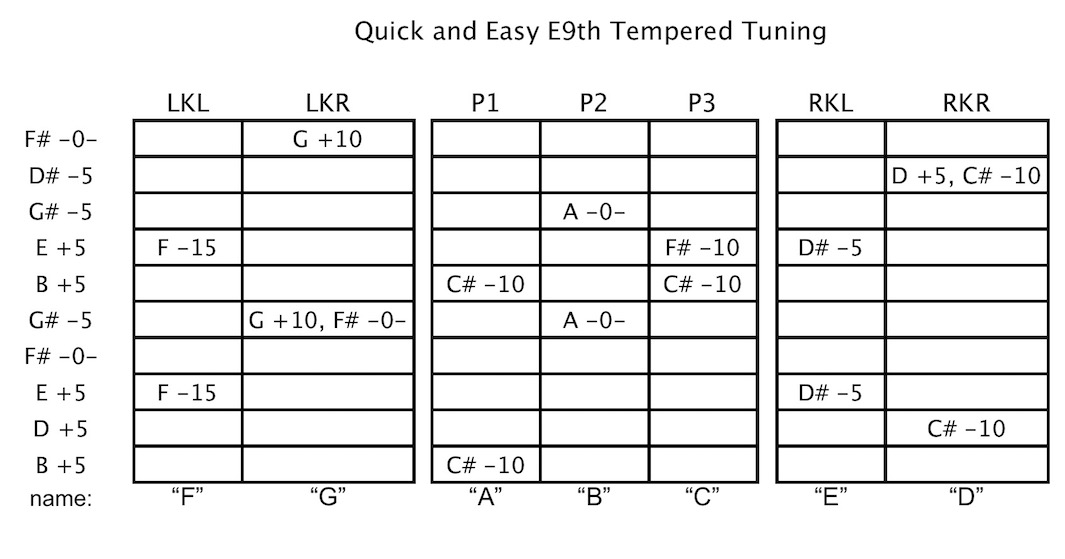This sweetened tuning is not JI, ET, or meantone. It’s sort of in between. It sounds good to me, and it has the advantage that all of the cents numbers are 5 cent lines on the tuning meter. I’ve been using it for many years. Since it’s in between the the two “accepted” tuning standards, it can slip a little bit one way or the other without sounding out of tune.
I use the chart to tune the pedals when I change strings. They stay in tune. I’ve memorized the open strings so I don’t have to refer to the chart. It’s easy – they’re all -5, +5 or zero.
I’ve done the math on this. Yes, it’s technically out of tune, but it probably sounds more in tune than the lead guitarist you’re playing with. Trust me. I’ve had no complaints about tuning from other musicians since I started using this method.
Note: Tune the A and B pedals with both pedals down, then tune the C pedal with B and C down.
This works fine for most guitars, but some have more or less “cabinet drop” than others. If your A pedal alone (for a minor chord) still sounds out, tune it harmonically to the 6th string with A+F engaged. Match the 7th fret harmonic of the pedaled 5th string (C#) to the 5th fret harmonic of the (open) 6th string (G#). Then tune the 10th string A pedal change to be an octave below the 5th string.
Visit our online Steel Guitar Shopper store for strings, equipment, music, instructional videos and materials, hard to find reference materials and rare items. https://www.steelguitarshopper.com/